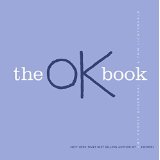Pumpkin Soup written and illustrated by Helen Cooper unfolds a reinterpretation of the classic “Stone Soup.” This retelling features many delightful twists. As in Stone Soup, the characters work together to create a tasty concoction. A bagpiping cat, a banjo-strumming squirrel and a singing duck joyfully prepare marvelous pumpkin soup. “Everyone has his own job to do. Everyone is happy. Or so it seems…”
Then the story shifts to a new direction. No longer about collaboration and pooling of scarce resources, Pumpkin Soup now focuses on the tension among the former friends. Duck isn’t content with her assigned task. She insists on trying her hand at stirring the soup. But, Cat and Squirrel wish for things to stay the same. Duck insists on having her chance to stir. The friends quarrel. Angry and frustrated, Duck leaves the cabin.
The story continues to unfold as Squirrel and Cat come to wish they had given Duck a chance. They worry when Duck doesn’t return. “Not even for lunch.” Young readers will readily identify with this conflict-among-friends scenario because it happens so often in their own lives.
The book does a great job of capturing the character’s frustration, remorse and most importantly their commitment to their friendship as well as their willingness to repair the breach. Their solution provides an excellent template for readers to embrace.
Pumpkin Soup offers an important reminder to parents as well that we must allow kids to try things. Although it takes longer and often results in a mess or in parents having to be satisfied with a less-than-perfect performance. The reward is a child’s increased competency and a reinforcement of their willingness to persevere through multiple “imperfect” attempts to ultimate success.
 AQ Lens: Many adopted kids avoid trying new things because they feel that failure will result in loss of acceptance, approval and at their most anxious level of fear, a loss of their family.
AQ Lens: Many adopted kids avoid trying new things because they feel that failure will result in loss of acceptance, approval and at their most anxious level of fear, a loss of their family.
As Cat and Squirrel worry about their missing friend, they wonder if Duck has found “better friends.” It would be an easy segue to talking about loyalty among friends and then on to discussions of family permanency.












